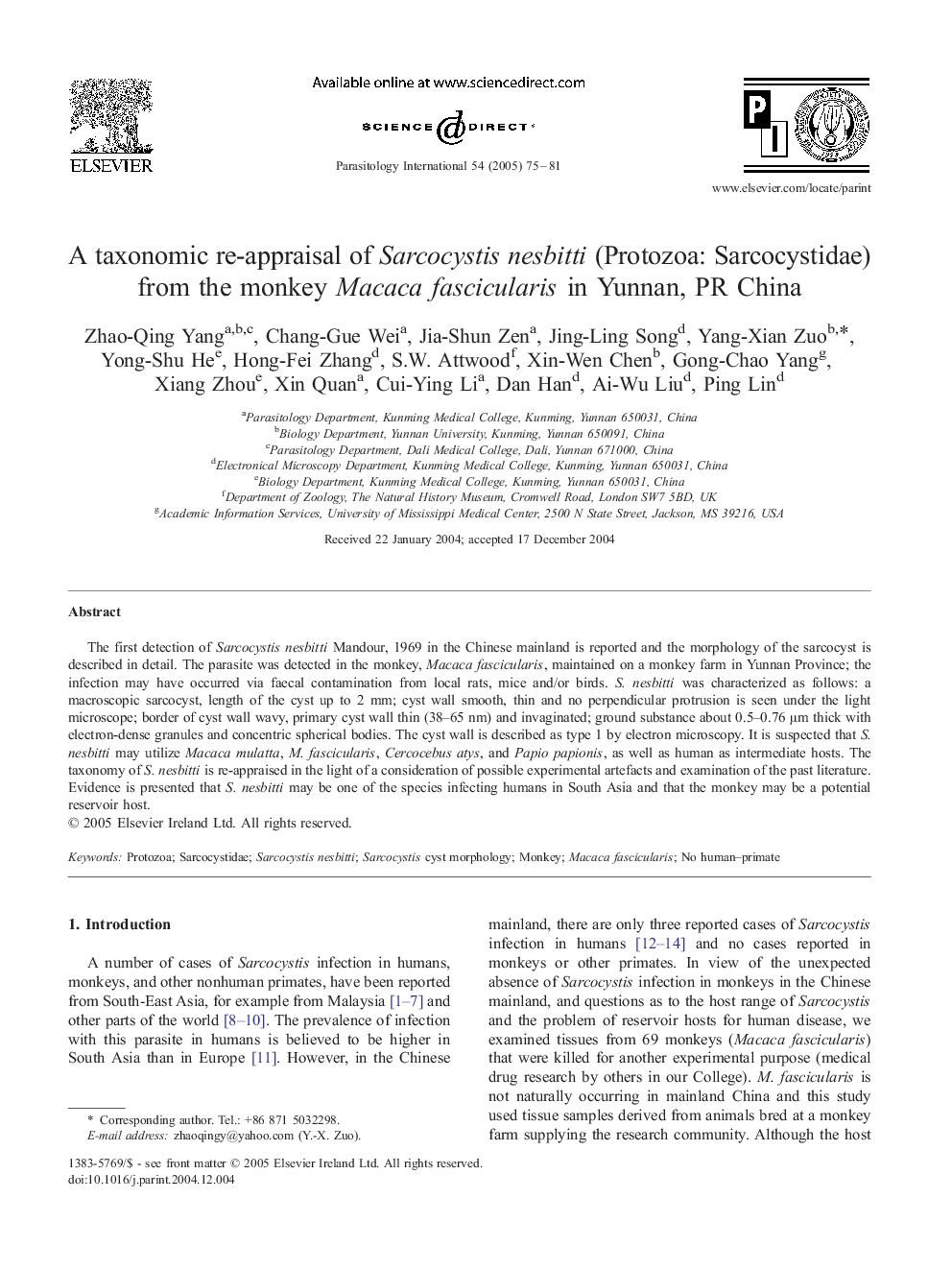| Article ID | Journal | Published Year | Pages | File Type |
|---|---|---|---|---|
| 9284146 | Parasitology International | 2005 | 7 Pages |
Abstract
The first detection of Sarcocystis nesbitti Mandour, 1969 in the Chinese mainland is reported and the morphology of the sarcocyst is described in detail. The parasite was detected in the monkey, Macaca fascicularis, maintained on a monkey farm in Yunnan Province; the infection may have occurred via faecal contamination from local rats, mice and/or birds. S. nesbitti was characterized as follows: a macroscopic sarcocyst, length of the cyst up to 2 mm; cyst wall smooth, thin and no perpendicular protrusion is seen under the light microscope; border of cyst wall wavy, primary cyst wall thin (38-65 nm) and invaginated; ground substance about 0.5-0.76 μm thick with electron-dense granules and concentric spherical bodies. The cyst wall is described as type 1 by electron microscopy. It is suspected that S. nesbitti may utilize Macaca mulatta, M. fascicularis, Cercocebus atys, and Papio papionis, as well as human as intermediate hosts. The taxonomy of S. nesbitti is re-appraised in the light of a consideration of possible experimental artefacts and examination of the past literature. Evidence is presented that S. nesbitti may be one of the species infecting humans in South Asia and that the monkey may be a potential reservoir host.
Related Topics
Life Sciences
Immunology and Microbiology
Parasitology
Authors
Zhao-Qing Yang, Chang-Gue Wei, Jia-Shun Zen, Jing-Ling Song, Yang-Xian Zuo, Yong-Shu He, Hong-Fei Zhang, S.W. Attwood, Xin-Wen Chen, Gong-Chao Yang, Xiang Zhou, Xin Quan, Cui-Ying Li, Dan Han, Ai-Wu Liu, Ping Lin,
